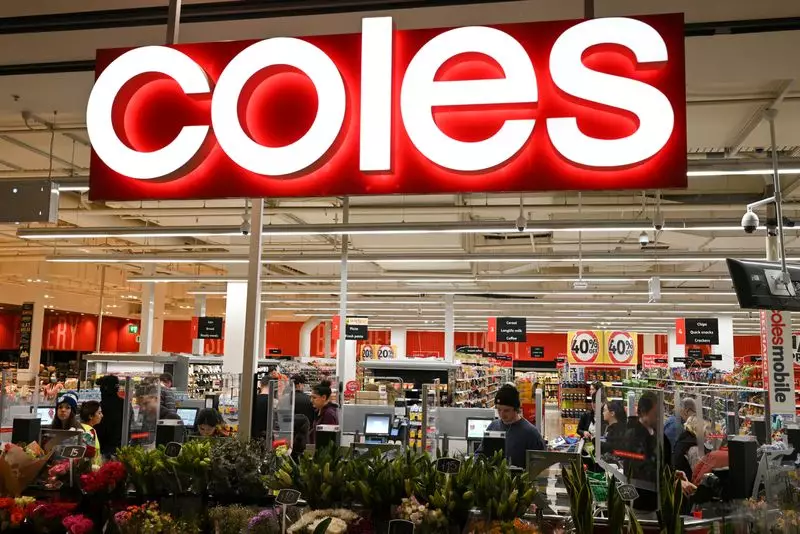In a latest financial report, Australian supermarket chain Coles has revealed a notable slowdown in comparable sales for the first quarter, spanning the 13 weeks to September 29. While the company managed to surpass market projections for overall group sales, it nonetheless reported a decline in comparable sales by 122 basis points, settling at a modest 2.4%, down from 3.6% in the same period a year prior. This fluctuation highlights the challenges faced by retailers during a time of rising living costs, which continue to strain consumer budgets across Australia.
The group’s overall sales revenue did see an uptick, burgeoning by 2.9% to A$10.55 billion ($6.94 billion). This number is slightly above the consensus expectations of A$10.51 billion, providing a slight glimmer of hope for the company amid broader economic concerns. Notably, Coles operates over 1,800 retail outlets, signifying its pivotal role in the Australian grocery market.
The ongoing cost of living crisis is a major factor influencing consumer purchasing behaviors, compelling Coles and its major competitor, Woolworths, to implement reductions in shelf prices. Leah Weckert, CEO of Coles Group, has emphasized the supermarket’s commitment to aiding customers in navigating these economic pressures through regular promotional offers and exclusive in-store campaigns. These efforts reflect a strategic response to the financial strain faced by many customers, illustrating that price sensitivity is a critical component of consumer behavior in this period.
Consumer response has been evident through the supermarket division, where promotional discounts and giveaways have become increasingly relevant. Interestingly, the e-commerce segment also experienced growth, indicating a shift in shopping habits, as customers turn to online platforms for better deals and convenience.
Upon analyzing Coles’ performance, analysts from Jefferies noted that the results were somewhat weaker than anticipated, mirroring trends observed at Woolworths. However, Jefferies pointed out a silver lining, suggesting that Coles’ communication regarding their business outlook was notably more positive than that of its rival, avoiding discussions around margin pressure that Woolworths has previously highlighted.
In parallel with the sales updates, Coles announced plans for an additional automated distribution center in Truganina, reflecting a substantial capital expenditure that may total A$1.3 billion for the fiscal year of 2025. Analysts believe this investment not only signals confidence in previous endeavors but is also expected to generate significant cost savings over time—projected at A$105 million within the current year.
As Coles navigates this intricate landscape, it remains under scrutiny from regulatory bodies for allegations of misleading consumers, adding an additional layer of complexity to its operational challenges. Nevertheless, with strategic pricing initiatives and an emphasis on e-commerce growth, Coles aims to adapt to the evolving needs of its customers while maintaining competitive positioning within Australia’s tightly-knit grocery sector. The combination of economic pressures and corporate strategy will ultimately determine whether Coles can sustain its market share and profit margins amidst a turbulent economic environment.

